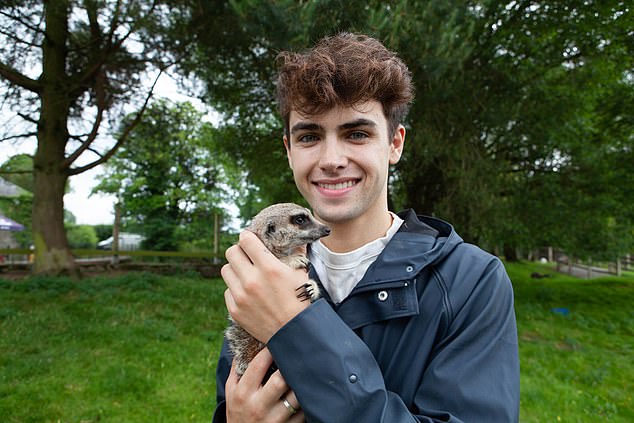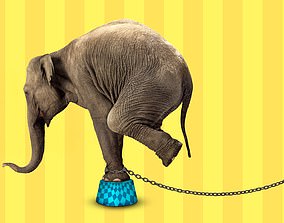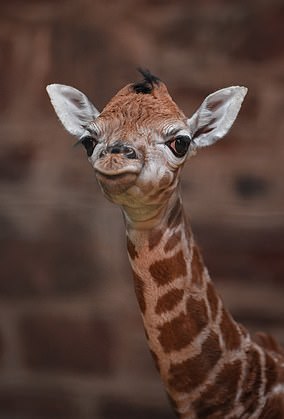Teen TikTok sensation Kyle Thomas thought it was a bit of harmless fun when he started posting videos of his growing collection of exotic pets along with food reviews and comedy sketches. He was a teenager when his meerkats Mylo and Dorothy, marmosets Trisha and Freddie, and three rescued foxes started appearing on his platform, but that’s when Kyle posted images of his pet capybara (a South American rodent) named Queen Elizabeth in a hat and costume. pumpkin on Halloween when the backlash from animal rights protesters began. And Kyle began to realize that his home was not the right environment for his unusual collection of animals.
The game changer for Kyle was when the capybara died of natural causes in 2022, leading to Kyle’s mother, Zena, being prosecuted for smuggling it from England to Northern Ireland, where they live. So he turned all the fuss around and decided to open his own wildlife park and exotic animal rescue centre, and now his incredible journey from social media sensation to animal rights ambassador has been charted in the new BBC documentary We Build A Zoo.
“I realized that meerkats don’t make good pets,” says Kyle, one of Britain’s highest-earning TikTokkers.
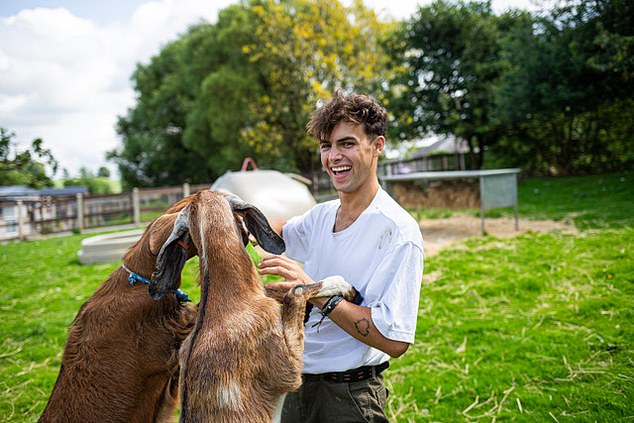
In the documentary, Kyle purchases his own 14-acre piece of land as he attempts to create his own sanctuary for creatures, including goats.
“There’s no easy way to say this,” explains Kyle, who is now one of Britain’s highest-earning TikTokkers, with 35 million followers when he’s just 19 (he posts up to 60 videos a week) and has just be named in Forbes. magazine’s annual 30 under 30 list of young entrepreneurs. ‘One day I went in to give my capybara more food before bed and she was having a seizure. I tried mouth to mouth and we took her to the vet but when we arrived she had already died. They said I needed a license to own a capybara and I said, “What?” I thought, “How the hell am I going to explain this?” I was terrified.
‘We bought the Queen Elizabeth from someone who distributed animals and claimed to have a good reputation. They said it was from a zoo and that it had all its papers. They said we didn’t need a license. I want people to realize that our intentions were pure. Most importantly, people should do their homework before purchasing animals and know that exotic animals are not pets. That’s what we had to learn.
‘One video that people really didn’t like was when I put this cape on Queen Elizabeth. At the time I didn’t see any harm in it. The capybara incident was a big turning point for me. It was really eye-opening when I realized the bad side of the exotic pet trade. It’s there for some people simply because of what they can get out of it: money.’
In the documentary, Kyle purchases his own 14-acre plot of land as he attempts to create his own sanctuary, but sadly fails due to objections from neighbors and controversial media attention. Their luck improves in January 2024, when local farmer and builder Phil Hughes comes to the rescue. Together, the duo turns Phil’s modest pet farm into a world-class animal sanctuary for Kyle’s pets and other unwanted exotic animals.
The show, which is similar in tone to Clarkson’s Farm, follows them as they build enclosures, learn about animals, navigate regulations, hire specialist vets and campaign to end the exotic pet trade.
The first task is to create a home for Kyle’s meerkats. ‘I realized that meerkats do not make good pets. I flew to South Africa and drove eight hours to the Kalahari Desert to learn from Alma Celeste Stafford, whose rehabilitation center rescues them from the pet trade.’ Alma shows how, as part of the illegal pet trade, meerkats and other exotic animals are wrapped in chicken wire mesh when they are four weeks old to restrict their movement so they cannot be detected by airport scanners. They can’t breathe, eat or drink.
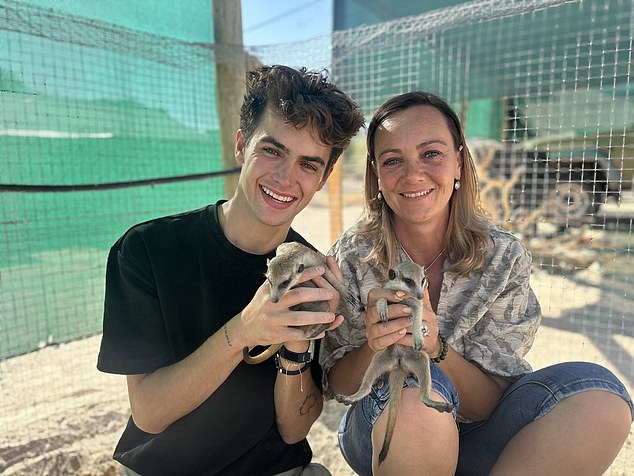
Kyle flew to South Africa and drove eight hours to the Kalahari Desert to learn from Alma Celeste Stafford, pictured, whose rehabilitation center rescues them from the pet trade.
Kyle breaks down in tears after learning this. ‘I was speechless. This is psychopathic. I’m pretty sure my meerkats were born in the UK because I bought them so young. But knowing the suffering that occurs makes me feel rubbish. At least now I can be a voice for the animals.
‘I’m visiting sanctuaries and talking to conservationists around the world. The exotic animal trade is covert. I don’t want to be part of that dark world. I want to change it and make people aware of it.’
Now the wildlife park, with its pythons, kunekune pigs, Yemen chameleon, an Argentine tegu lizard and exotic tortoises, to name just a few, is open to the public. ‘The goal is for people to get closer to the animals and their keepers, so they have an intimate experience.
‘We still have a long way to go. We are transforming what was once a petting zoo into something with a larger mission. We don’t try to be experts, we consult experts all the time and we all continue to learn. There’s a long way to go, but it’s exciting.’
We built a zoo, Wednesday, 9pm, BBC3 and BBC iPlayer.


